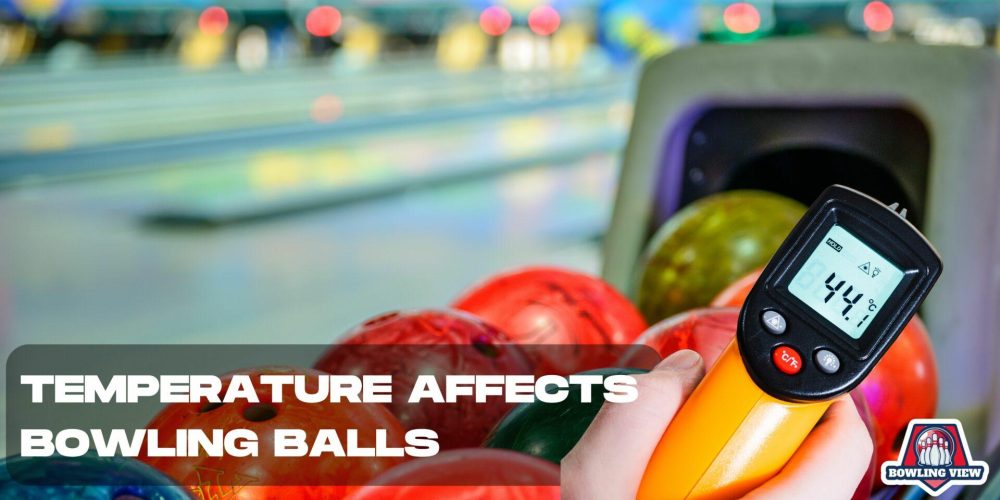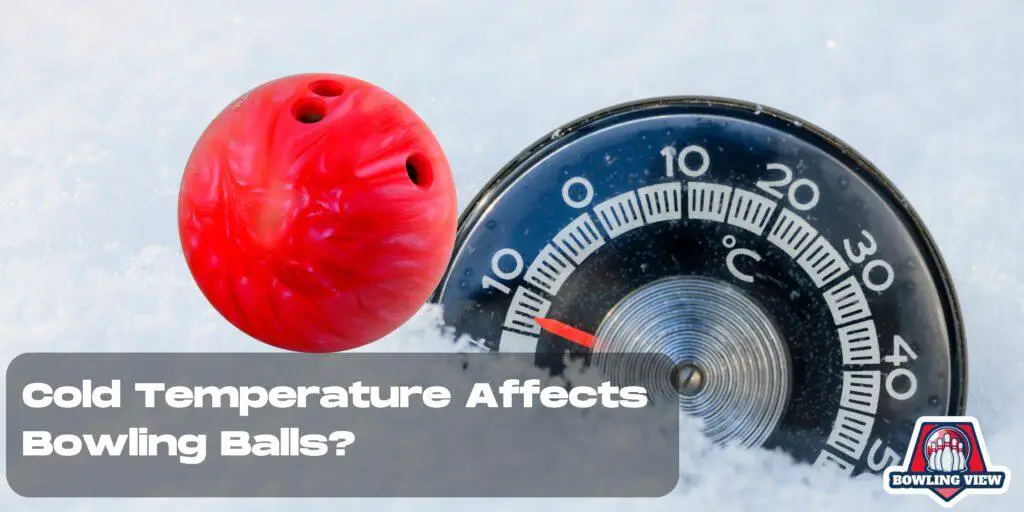Bowling is an immensely popular sport worldwide, captivating players with its perfect blend of skill, strategy, and fun. At the heart of this engaging sport lies the most essential piece of equipment – the bowling ball.
The bowling ball holds significant importance in the game as it can dramatically influence a player’s performance based on its weight, size, and material.
However, one often overlooked factor is the impact of temperature on bowling balls. The way temperature affects bowling balls can influence both the physical properties of the ball and its performance on the lane.
In this post, we delve into understanding how and why temperature affects bowling balls and why it’s crucial for bowlers to take this into account.
Understanding How Temperature Affects Bowling Balls
Bowling balls are usually made of materials such as urethane, reactive resin, or plastic. These materials react differently to changes in temperature.
When exposed to colder temperatures, the materials in the bowling ball contract. This contraction can result in a decreased hook potential, meaning the ball won’t curve as much as it typically does.
On the other hand, when temperature affects bowling balls by being warmer, the materials in the bowling ball tend to expand. This expansion can lead to an increased hook potential, which means the ball could curve more than usual.
Another important factor to consider is the oil patterns on the lanes, which can also be affected by temperature changes, adding another layer of complexity to the game.
Understanding these specific changes that occur due to temperature fluctuations can help bowlers to adapt their game, ensuring their bowling balls perform optimally no matter the conditions.
How Cold Temperature Affects Bowling Balls
Cold temperatures can significantly affect the performance of bowling balls. When exposed to cold, the ball’s coverstock – the outermost layer – can contract, leading to reduced friction on the lane surface. This could cause the ball to skid more and hook less, resulting in less control over the ball’s movement.
One practical example can be seen during winter seasons in colder regions. Bowlers often report that their balls don’t react as aggressively on the back end of the lane.
Supporting evidence comes from a study by the United States Bowling Congress (USBC), where they found that bowling balls stored in colder temperatures showed a decreased coefficient of friction, confirming the anecdotal experiences of many bowlers.
How Warm Temperature Affects Bowling Balls
When exposed to warm temperatures, bowling balls may undergo significant changes that affect their performance. Firstly, the heat can cause the ball to expand, altering its size and consequently its rolling speed on the lane. As a result, bowlers may find it more challenging to achieve precision and control over their throws.
Secondly, warm temperatures can also soften the coverstock (outer layer) of the bowling ball. A softer coverstock increases the ball’s friction with the lane, which may lead to a higher hook potential. This change might be beneficial for some bowlers, but it could also cause unpredictability if the temperature changes are extreme or inconsistent.
For instance, consider the experience of a professional bowler who participated in an outdoor tournament in Arizona during the summer. The temperatures soared above 100 degrees Fahrenheit, causing his bowling ball to expand and soften.
He noticed an increased hook potential, which initially seemed advantageous. However, as the temperature fluctuated throughout the day, so did his ball’s performance, leading to an unpredictable game.
These examples illustrate how crucial it is to understand and adapt to the effects of warm temperatures on bowling balls. This knowledge can be the difference between maintaining consistent game performance and struggling with unexpected changes.
How to Maintain Bowling Balls in Different Temperatures
Tips and steps to protect bowling balls in cold temperatures
Bowling balls are highly sensitive to cold temperatures. To ensure your bowling ball maintains its performance, it’s crucial to store it in a room-temperature environment when not in use.
Avoid leaving your bowling ball in the trunk of your car during winter as the extreme cold can cause cracking. Use a bowling ball heater if the bowling ball has been exposed to colder temperatures.
Tips and steps to protect bowling balls in warm temperatures
On the other hand, warm temperatures can cause the oil in bowling lanes to break down faster, making your ball react differently. Do not expose your bowling ball directly to sunlight for extended periods.
Make sure to clean your bowling ball regularly to remove lane oil that has been absorbed and might accelerate the ball’s deterioration in warm temperatures. Using a bowling ball de-oiler can also help maintain the longevity of your bowling ball.
Conclusion
As we’ve seen, how temperature affects bowling balls is not just a minor detail, but a crucial aspect of maintaining the performance of bowling balls. The effects of cold and warm climates on the ball’s material can significantly change its behavior on the lanes, either giving you an edge or putting you at a disadvantage.
Therefore, it is important for all bowling enthusiasts, whether they are casual players or competitive professionals, to understand and consider these factors.
In conclusion, always ensure your bowling balls are stored properly and are at a moderate temperature before using them.
This knowledge and attention to detail will not only prolong the life of your bowling ball but could also be the difference between a good game and a great one. Stay informed, stay prepared, and remember – the science of bowling is just as important as the skill.
Frequently Asked Questions
In our continuous effort to assist bowlers, we’ve compiled a list of frequently asked questions that address common concerns about bowling ball maintenance. Extend the life of your equipment and enhance your game performance by reading the responses to these commonly raised questions.
Q: How can extreme temperature affect bowling balls?
A: Yes, extreme temperatures can significantly affect a bowling ball. Extreme heat can cause the coverstock to expand, while extreme cold can cause it to contract. This expansion and contraction can cause your bowling ball to crack.
Q: Can a bowling ball crack in the cold?
A: Absolutely. The extreme cold can cause the coverstock of the bowling ball to contract, which can potentially cause small cracks. If these cracks continue to expand, they can eventually ruin the bowling ball.
Q: How should I store my bowling ball to avoid temperature damage?
A: To prevent temperature damage, you should store your bowling ball in a cool, dry place, away from direct sunlight. A bowling ball bag is also a great option for protecting the ball from temperature extremes and potential impacts.
Q: Is it okay to leave your bowling ball in the car?
A: It is not recommended to leave a bowling ball in your car, especially in extremely cold or hot weather. The inside of a car can reach extreme temperatures, which can cause the ball to crack.
Q: Can bowling balls freeze and crack?
A: Bowling balls themselves don’t freeze, but extreme cold can make them more susceptible to cracking. Changes in temperature can cause the ball’s coverstock to expand and contract, which can lead to cracking.
Q: What can I do if my bowling ball has cracked?
A: Minor cracks on a bowling ball’s surface may be repairable at a local bowling alley or pro shop. However, if the crack has reached the core of the ball, it’s typically beyond repair. It’s best to consult with a professional to decide the best course of action.
Q: Can the way I store my bowling ball affect its performance?
A: Yes, the way you store your bowling ball can affect its performance. If a bowling ball is subjected to extreme temperatures, it could lead to the coverstock cracking. This can greatly affect how the ball rolls and ultimately your game performance.
Q: Are there any specific places best to store my bowling ball?
A: The best place to store your bowling ball is in a cool, dry, and controlled temperature environment, free from any extreme weather conditions. You might also consider using protective bags specifically designed for bowling balls.
Q: Can frequent temperature changes affect a bowling ball?
A: Yes, regular exposure to fluctuating temperatures can lead to the deterioration of the bowling ball’s coverstock, potentially causing it to crack over time. It’s best to store your bowling ball in a stable, moderate temperature to extend its life.
Q: Can keeping my bowling ball dirty affect it?
A: Yes, keeping your bowling ball dirty can affect its performance. Accumulated oil, dust, and other residues can change the ball’s surface interaction with the lane. Regular cleaning helps to maintain the ball’s performance and prevent any unnecessary wear and tear.



